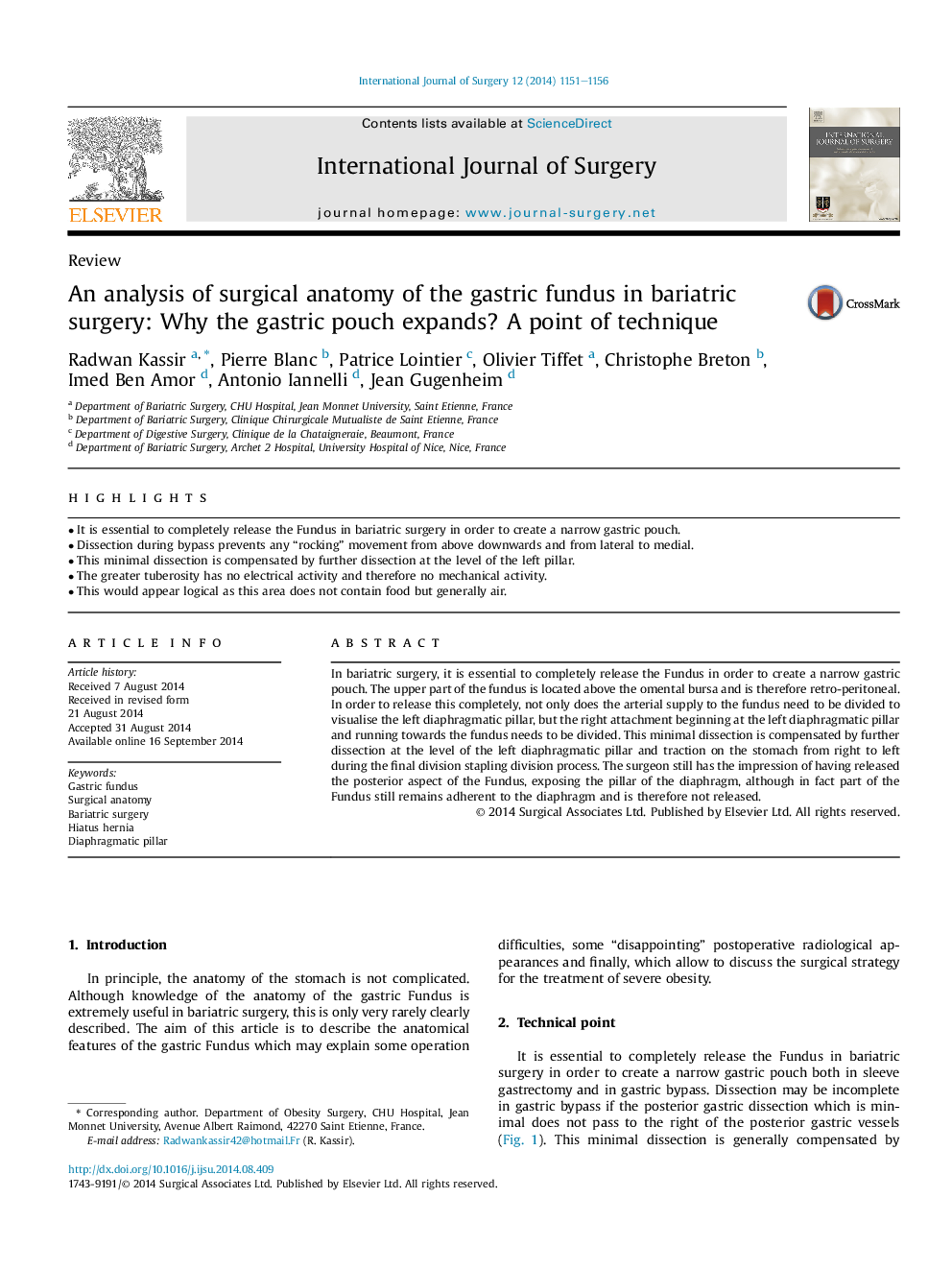| Article ID | Journal | Published Year | Pages | File Type |
|---|---|---|---|---|
| 4286353 | International Journal of Surgery | 2014 | 6 Pages |
•It is essential to completely release the Fundus in bariatric surgery in order to create a narrow gastric pouch.•Dissection during bypass prevents any “rocking” movement from above downwards and from lateral to medial.•This minimal dissection is compensated by further dissection at the level of the left pillar.•The greater tuberosity has no electrical activity and therefore no mechanical activity.•This would appear logical as this area does not contain food but generally air.
In bariatric surgery, it is essential to completely release the Fundus in order to create a narrow gastric pouch. The upper part of the fundus is located above the omental bursa and is therefore retro-peritoneal. In order to release this completely, not only does the arterial supply to the fundus need to be divided to visualise the left diaphragmatic pillar, but the right attachment beginning at the left diaphragmatic pillar and running towards the fundus needs to be divided. This minimal dissection is compensated by further dissection at the level of the left diaphragmatic pillar and traction on the stomach from right to left during the final division stapling division process. The surgeon still has the impression of having released the posterior aspect of the Fundus, exposing the pillar of the diaphragm, although in fact part of the Fundus still remains adherent to the diaphragm and is therefore not released.
